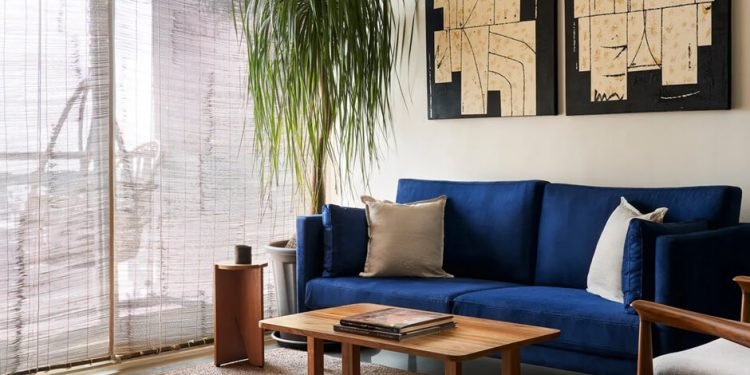In an era of compact living, small spaces have become increasingly common. The challenge lies in designing furniture that fits seamlessly into these limited areas while providing optimal functionality and style as McKenna & Vane Property Management team notes. This article explores the art of designing wood furniture for small spaces, offering creative solutions to maximize both practicality and aesthetics.
Understanding Small Space Design
Small space design encompasses the art of making the most out of limited square footage. To design furniture for small spaces effectively, it is crucial to consider specific factors such as space utilization, multi-functionality, and storage solutions. These considerations lay the foundation for creating furniture pieces that are tailored to the unique needs of small living spaces.
Space-Saving Strategies and Furniture Designs
Modular Furniture: Modular furniture offers versatility and adaptability, allowing users to customize their furniture layouts according to their changing needs. Examples include modular seating systems and shelving units that can be rearranged to fit different spaces.
Convertible and Expandable Furniture: Furniture that can transform or expand in size serves a dual purpose, saving space when not in use. Examples include foldable tables, wall beds, and extendable dining sets.
Built-In Storage Solutions: Integrating storage solutions directly into furniture designs is essential for maximizing space in small areas. Hidden compartments, built-in shelving, and under-bed storage are effective ways to utilize every available inch.
Vertical Space Utilization: Vertical space is often underutilized in small rooms. By incorporating tall bookcases, wall-mounted storage units, and hanging organizers, designers can take advantage of vertical space to provide additional storage and display areas.
Lightweight and Compact Designs: Lightweight materials and compact designs not only save space but also make furniture easier to move and rearrange as needed.
Design Principles for Small Space Wood Furniture
Simplified and Streamlined Aesthetics: Clean lines and minimalist designs create an illusion of openness in small spaces. By avoiding excessive ornamentation, furniture can contribute to a visually spacious environment.
Light Wood Tones: Light-colored wood finishes, such as maple or birch, help to brighten small spaces and make them feel more open and airy.
Space Illusion Techniques: Incorporating mirrors, glass elements, and reflective surfaces can create an illusion of a larger space by bouncing light and visually expanding the room.
Multi-Functional Designs: Furniture pieces that serve multiple purposes are invaluable in small spaces. Storage ottomans, nesting tables, and sofa beds are examples of furniture that combines functionality and space-saving design.
Customization and Flexibility: Custom-made wood furniture allows designers to tailor pieces to the specific dimensions and needs of small spaces. Customization ensures that every inch is utilized effectively, creating furniture that perfectly fits the available area.
Practical Tips for Small Space Living
Furniture Placement: Strategic furniture placement is essential for maximizing space in small rooms. Optimize traffic flow and create a sense of openness by considering sightlines and leaving enough room for movement.
Decluttering and Organization: Eliminating clutter and organizing belongings is crucial for small space living. Utilize storage solutions and develop efficient systems to maintain a tidy and functional living environment.
Lighting and Mirrors: Proper lighting and the strategic use of mirrors can greatly enhance the perception of space. Maximizing natural light and adding artificial lighting where needed can brighten up small interiors.
Incorporating Natural Elements: Wood furniture brings warmth, texture, and a connection to nature in small spaces. Use wood accents or choose wood furniture pieces to create a cozy and inviting atmosphere.
Embracing Minimalism: Adopting a minimalist mindset by prioritizing functionality and essential items allows for a clutter-free and visually calming space.
Case Studies and Inspiration
To provide practical examples and inspiration, let’s explore some innovative wood furniture designs specifically tailored for small spaces:
The Transforming Coffee Table: This coffee table doubles as a dining table, making it ideal for compact living. It features a lift-top mechanism that raises the table’s height, transforming it into a convenient dining surface when needed. The table also offers storage compartments for stashing away dining essentials, further maximizing its functionality.
The Wall-Mounted Desk: Perfect for small home offices or study areas, the wall-mounted desk offers a compact workspace solution. It folds up against the wall when not in use, saving valuable floor space. Some designs even incorporate built-in shelving units or file organizers to provide additional storage options.
The Loft Bed with Integrated Storage: Loft beds are popular choices for optimizing space in small bedrooms. They elevate the sleeping area, creating room for storage or a desk underneath. These designs often include built-in drawers, shelves, and even a desk, offering a complete and space-efficient bedroom solution.
The Foldable Dining Set: This innovative dining set features a folding table and collapsible chairs. When not in use, the table can be folded down and the chairs can be stored compactly. This design is perfect for small dining areas or studio apartments, allowing for easy storage and flexibility.
The Wall-Mounted Shelving System: This space-saving solution combines storage and display options. The modular design allows for customization, enabling users to configure the shelving system according to their specific needs. By utilizing vertical wall space, this design provides ample storage without occupying valuable floor area.
Conclusion
Designing wood furniture for small spaces is an art that balances functionality and style. By incorporating space-saving strategies, adhering to design principles, and considering the unique needs of small living areas, furniture designers can create pieces that maximize utility without sacrificing aesthetics.
The use of modular furniture, convertible designs, and built-in storage solutions offers versatility and adaptability. Simplified aesthetics, light wood tones, and space illusion techniques contribute to the visual spaciousness of small spaces. Customization and multi-functionality ensure that furniture is tailored to specific dimensions and serves multiple purposes.
By following practical tips for small space living and drawing inspiration from innovative designs, individuals can transform their limited living areas into functional and inviting spaces. Embracing the challenge of small space design with wood furniture opens up a world of creative possibilities, proving that even in the smallest of spaces, style and functionality can thrive.












